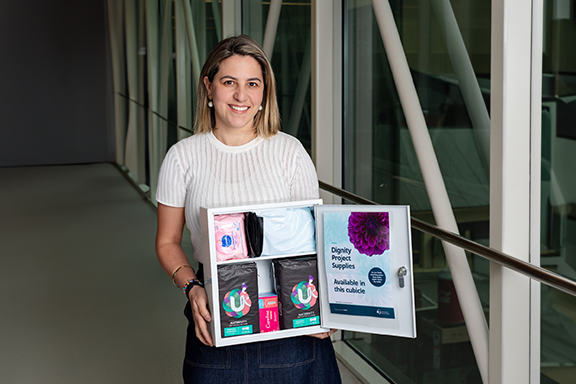The Pharmacy Board of Australia’s revised Guidelines on compounding of medicines, which will take effect from 1 October 2024, is a timely reminder of the responsibilities of pharmacists when compounding.
If your pharmacy performs simple or complex compounding or is considering the initiation of a compounding service, the preparation of these medicines carries additional risk. Pharmacists must be aware and proactive in establishing procedures to minimise potential hazards that could result in incidents or harm.
Risk assessment
The use of any medicine comes with risks, and a compounded medicine is no different. Conducting a documented risk assessment prior to every compounding request is essential to identify potential hazards and decide if the compounding activity should proceed. The below list is NOT exhaustive, but contains important considerations that should be assessed before proceeding:
• Formulation factors such as stability, quality of active pharmaceutical ingredients (APIs), preservation, expiration dates, dosage form and narrow therapeutic index.
• Patient considerations include age, weight, allergies, concurrent medicines, comorbidities and patient-related limitations to dosage forms.
• Procedure-related risks include storage and handling of active ingredients including cytotoxic or dangerous ingredients, contamination and ensuring uninterrupted compounding workflow.
• Regulatory considerations including legislation, medicine scheduling, facility licensing and third-party supply guidelines.
• Personnel factors including staff training, technical knowledge and routine health monitoring of staff involved in compounding hazardous ingredients such as hormones or cytotoxics.
• Batch compounding, except in hospital or TGA-approved facilities, is an area of concern for regulators and a potential risk for patients.
• Commercial products should be preferenced unless they are unsuitable or unavailable. Regular review of ARTG listings can inform pharmacists of recently approved commercial products.*
Commonly reported incidents
Recent media attention placed a spotlight on patient harm caused by compounded preparations such as semaglutide and colic mixtures.
While the above cases are very small in number, PDL receives incident reports across the spectrum of compounded medicines including clonidine, atenolol, minoxidil, liothyronine, tacrolimus and melatonin. The more common themes amongst these incidents include lapses of oversight by pharmacists or pharmacy owners, calculation errors, dose transcription errors, incorrect compounding procedures and poor record keeping.
Cases have included the following incident types:
- Calculation errors, leading to supra-potency or sub-potency of compounded products. Simple mathematical and measurement mistakes are often involved. These might also be attributable to incorrectly calculated formulas used on multiple occasions with assumptions they are accurate and have been independently checked.
- Confusion between units of measure involving micrograms and milligrams. Examples of medicines involved in this error type include clonidine and some thyroid hormones. When the quantity of API required is smaller than can be measured using a weigh scale, then trituration is needed. Additional calculations and unit conversions required for trituration can introduce further risk.
- Labelling errors of compounded products. For instance, transposing “mL” and “mg” on labelled instructions can result in toxic doses. A compounded propranolol 5mg/mL mixture prescribed as “give 2.5mg” but labelled as “2.5mL” would result in a dose five times higher than prescribed.
- Paediatric patients are a common demographic for compounded medicines and vulnerable to the consequences of an error.
Good procedures
Patient safety is paramount and relies on strict adherence to quality assurance processes when preparing compounded medicine. The foundation of a quality culture in a compounding pharmacy is built on robust policies and procedures that are continuously reviewed. Incidents often arise from factors such as compounder inexperience, lack of technical knowledge, insufficient training, distractions, inadequate documentation and uncalibrated equipment.
High-risk medicines may require extra vigilance to minimise errors and safeguard patient safety. For instance, independent calculations by two pharmacists may be required for medicines with a narrow therapeutic index. Software programs with pop-up warning statements are recommended for additional checks on high-risk compounds. PDL would like to remind pharmacists to exercise care when compounding APIs such as hormones, tacrolimus, phenytoin, cyclosporine and carbamazepine.
The compounding process should be reproducible to ensure consistency and continuity for patients. Detailed records of formulation and processes, along with references to formula appropriateness, provide traceability in case of issues. A final risk assessment post-preparation can help identify potential issues before a medicine is released to the patient. Employing an external testing facility for quality control checks on compounded products can assist pharmacists in identifying discrepancies related to potency, purity and quality.
Patient counselling
Pharmacists have a responsibility to educate patients and their carers about additional risks associated with compounded medicines. As compounded medicines are not registered products, a discussion and informed consent with the patient for this therapeutic approach is warranted. Written consumer information is often unavailable for compounded medicines and consumers may benefit from having access to verbal counselling or alternative information to ensure the safe and effective use of the medicine.
Patient awareness of their prescribed medicine, dose and potential side effects are very important. Compounded medicines often come with calibrated measures or application devices not commonly seen by patients. As such, pharmacists should ensure all patients receive counselling on the correct use, storage and expiry of a compounded medicine.
*At the time of publication examples of commercially available products that were previously compounded include, but not limited to, omeprazole oral liquid (2mg/mL and 4mg/mL), melatonin oral liquid (1mg/mL) and atropine 0.01% eye drops.
PDL members can call 1300 854 838 for advice and incident support from one of our Professional Officers. Supporting our pharmacist members 24/7.



